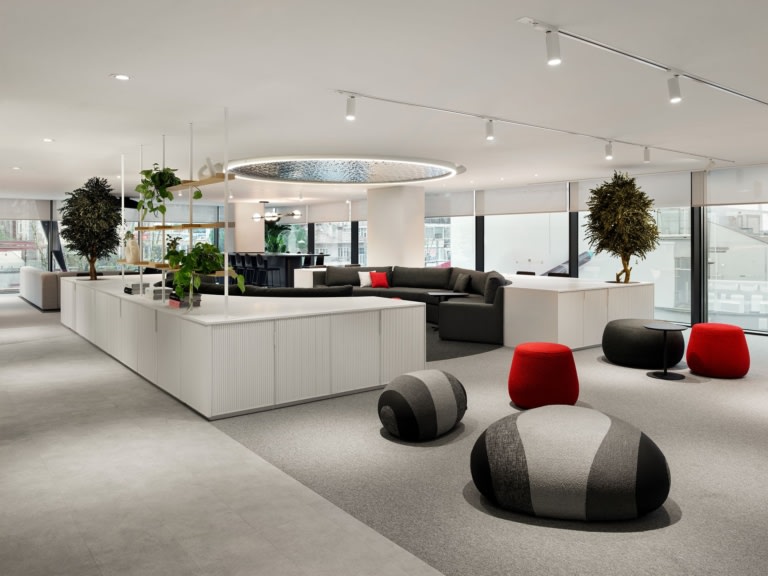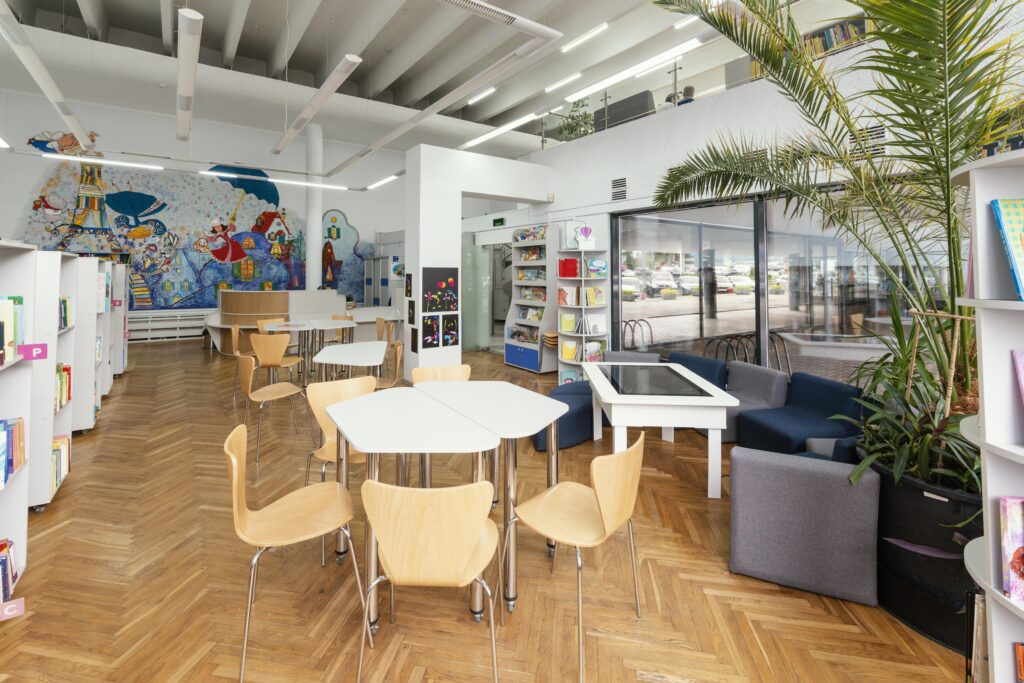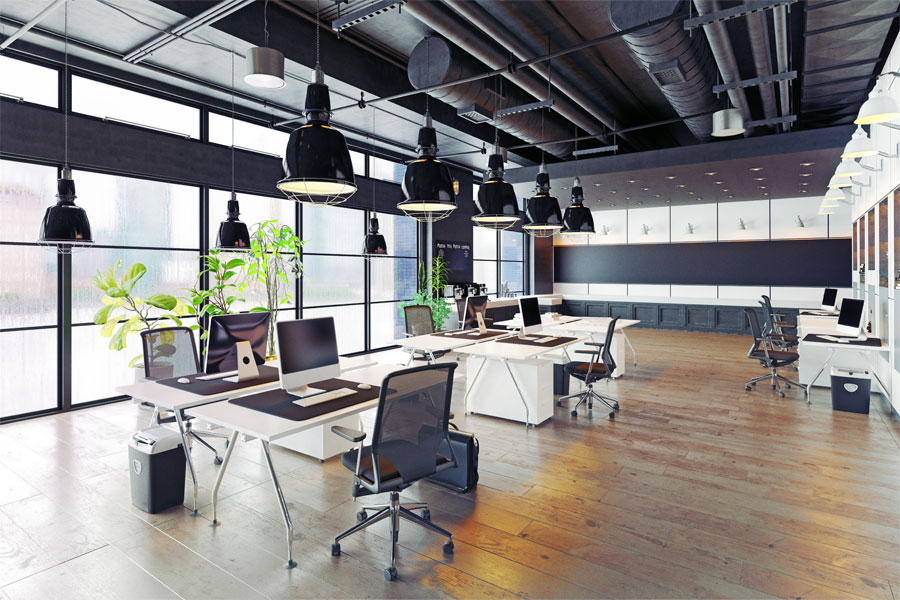In the bustling world of business, the design of office spaces plays a crucial role in shaping the productivity, morale, and overall success of an organization. Commercial office interior design is the key to creating environments that not only facilitate work but also inspire innovation and foster a positive company culture. In this blog, we’ll explore the fundamental principles and strategies of commercial office interior design, uncovering the secrets to crafting workspaces that enhance efficiency and employee satisfaction.
Understanding Commercial Office Interior Design
Commercial office interior design is a specialized discipline that focuses on creating functional, efficient, and visually appealing work environments. Unlike residential interior design, which caters to individual preferences, commercial office design must consider the needs and workflows of an entire organization. From open-plan layouts to private offices, meeting rooms, and communal spaces, every aspect of the office environment is carefully curated to support productivity and collaboration.
The Importance of Layout and Space Planning
The layout of an office has a significant impact on workflow, communication, and employee interaction. Commercial office interior designers carefully consider factors such as traffic flow, departmental adjacencies, and workspace ergonomics when planning office layouts. By optimizing spatial arrangements and circulation patterns, designers create environments that promote efficiency and minimize distractions, ultimately enhancing productivity and employee satisfaction.

Balancing Aesthetics and Functionality
Commercial office interior design is a delicate balance between aesthetics and functionality. Designers strive to create spaces that are not only visually stunning but also practical and efficient. We’ll explore how designers optimize layouts, furniture, and lighting to enhance productivity and comfort without sacrificing style.
Creating Comfortable and Functional Workstations
The workstation is the heart of any office, serving as the primary workspace for employees. Commercial office interior designers focus on creating ergonomic workstations that support health, comfort, and productivity. This includes selecting ergonomic furniture, such as adjustable desks and ergonomic chairs, as well as providing adequate lighting, storage, and technology integration. By prioritizing comfort and functionality, designers ensure that employees can focus on their tasks without unnecessary distractions or discomfort.
Enhancing Collaboration and Communication
Collaboration is essential for driving innovation and problem-solving in the modern workplace. Commercial office interior designers incorporate collaborative spaces, such as meeting rooms, breakout areas, and informal gathering spots, into office designs to facilitate interaction and teamwork. These spaces are designed to encourage spontaneous discussions, brainstorming sessions, and cross-departmental collaboration, fostering a culture of innovation and creativity within the organization.
Reflecting Company Culture and Values
The design of the office should reflect the unique culture and values of the organization. Commercial office interior designers work closely with clients to understand their company culture and translate it into the physical environment. From branded graphics and signage to custom furnishings and artwork, designers create spaces that align with the company’s identity and foster a sense of belonging among employees.
The Art of Spatial Planning
Commercial office interior design begins with careful spatial planning to optimize the layout and flow of the workspace. Designers consider factors such as departmental adjacency, traffic patterns, and accessibility to create efficient and intuitive environments. By strategically arranging workstations, meeting rooms, and communal areas, designers ensure that every square foot of the office is utilized effectively to support productivity and collaboration.
Embracing Technology and Innovation
Technology plays a crucial role in modern office environments, enabling collaboration, communication, and productivity. Commercial office interior designers integrate technology seamlessly into the workspace, providing access to the latest tools and amenities that enhance efficiency and effectiveness. This may include interactive displays, video conferencing systems, smart lighting, and IoT-enabled devices that streamline workflows and improve the overall user experience.
Incorporating Brand Identity and Culture
The design of an office should reflect the brand identity and values of the organization. Commercial office interior designers work closely with clients to understand their brand identity, company culture, and values, translating these elements into the physical environment. From the use of brand colors and logos to the incorporation of company values and mission statements into design elements, every aspect of the office design reinforces the organization’s identity and fosters a sense of belonging among employees.

Embracing Flexibility and Adaptability
In today’s rapidly changing business landscape, flexibility is key to staying agile and responsive to evolving needs. Commercial office interior designers incorporate flexible design elements, such as movable partitions, modular furniture, and adaptable layouts, into office designs to accommodate changing workstyles and requirements. This allows organizations to easily reconfigure their office spaces as needed, whether to accommodate growth, support new ways of working, or respond to unforeseen challenges.
Creating a Positive Work Environment
A positive work environment is essential for attracting and retaining top talent, fostering employee engagement, and driving organizational success. Commercial office interior designers focus on creating environments that promote employee well-being, satisfaction, and happiness. This includes considerations such as access to natural light, indoor plants, comfortable furnishings, and amenities such as wellness rooms or relaxation areas. By prioritizing employee happiness and comfort, designers create workplaces where employees feel valued, supported, and motivated to excel.
Prioritizing Employee Well-being
Employee well-being is a cornerstone of successful organizations. Commercial office interior designers prioritize the physical and mental health of employees by creating environments that promote comfort, relaxation, and mindfulness. This includes incorporating ergonomic furniture, access to natural light, greenery, and wellness amenities such as meditation rooms or fitness areas. By prioritizing employee well-being, designers create workplaces where employees feel valued, supported, and motivated to perform at their best.

Creating a Lasting Impression
The design of the office space can leave a lasting impression on clients, visitors, and potential recruits. Commercial office interior designers focus on creating memorable and impactful environments that reflect the professionalism and innovation of the organization. By creating visually stunning and functional spaces, designers enhance the company’s reputation and leave a positive impression on stakeholders.
Commercial office interior design is a powerful tool for shaping the success and culture of an organization. By carefully considering factors such as layout, workstation design, collaboration spaces, brand identity, flexibility, and employee well-being, designers create environments that enhance productivity, foster creativity, and promote employee satisfaction. Investing in commercial office interior design is not just about creating a beautiful workspace; it’s about creating a strategic asset that drives organizational success and supports the growth and prosperity of the business.





